Moving Mountains
Diving in the Pacific Northwest can be challenging at times, the temperate water and massive amount of gear needed to stay warm and day but being able to swim and photography the amazing creatures that live here is something that is immensely rewarding.
One of those creatures is this colourful behemoth, the Puget Sound King Crab.
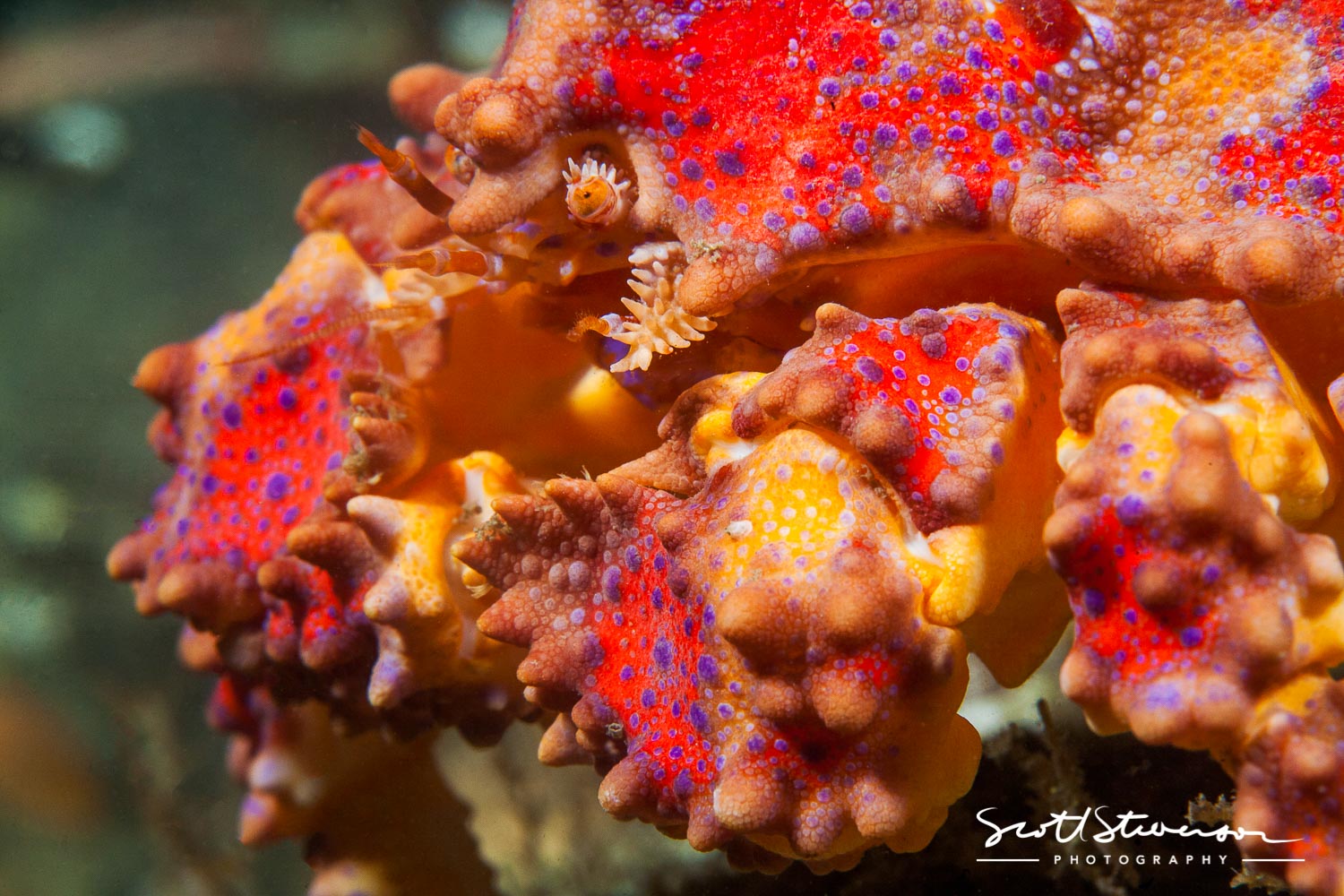
Puget Sound King Crabs, Lopholithodes mandtii, are members of the Anomura group. Millions of years ago this family originally evolved from hermit crabs, (the Paguridae family), and have since been described as “hermit crabs that have abandoned the practice of carrying shells”. In fact, the larval stages of Lithodidae appear virtually identical to those of hermit crabs and many aspects of the adult shape bear a resemblance to their hermit crab ancestors. More species of Lithodidae crabs are found in the Northern Pacific than in any other location on Earth, leading many researchers to make the conclusion that the family initially evolved in this cold, vast region.
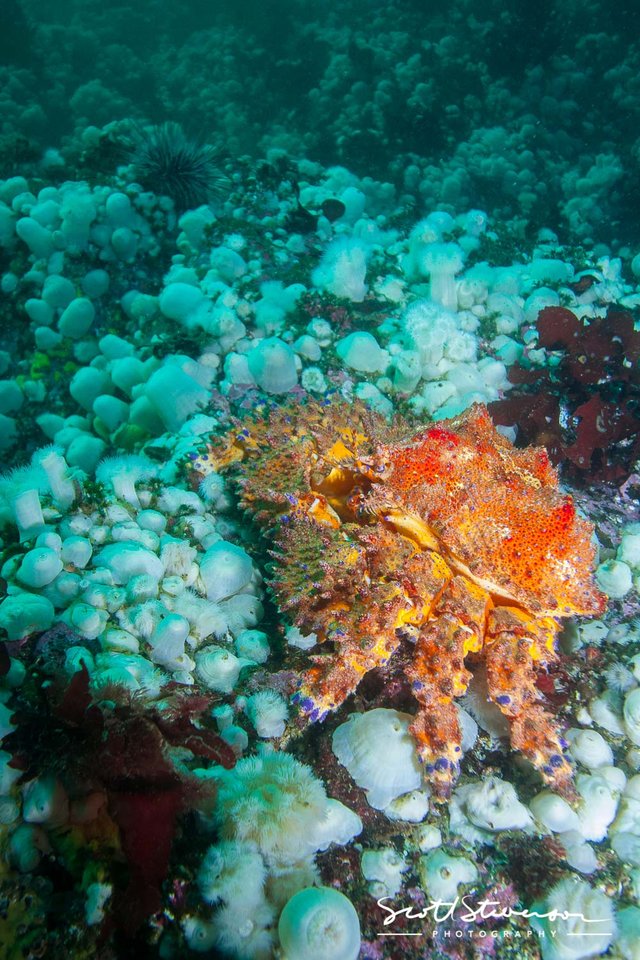
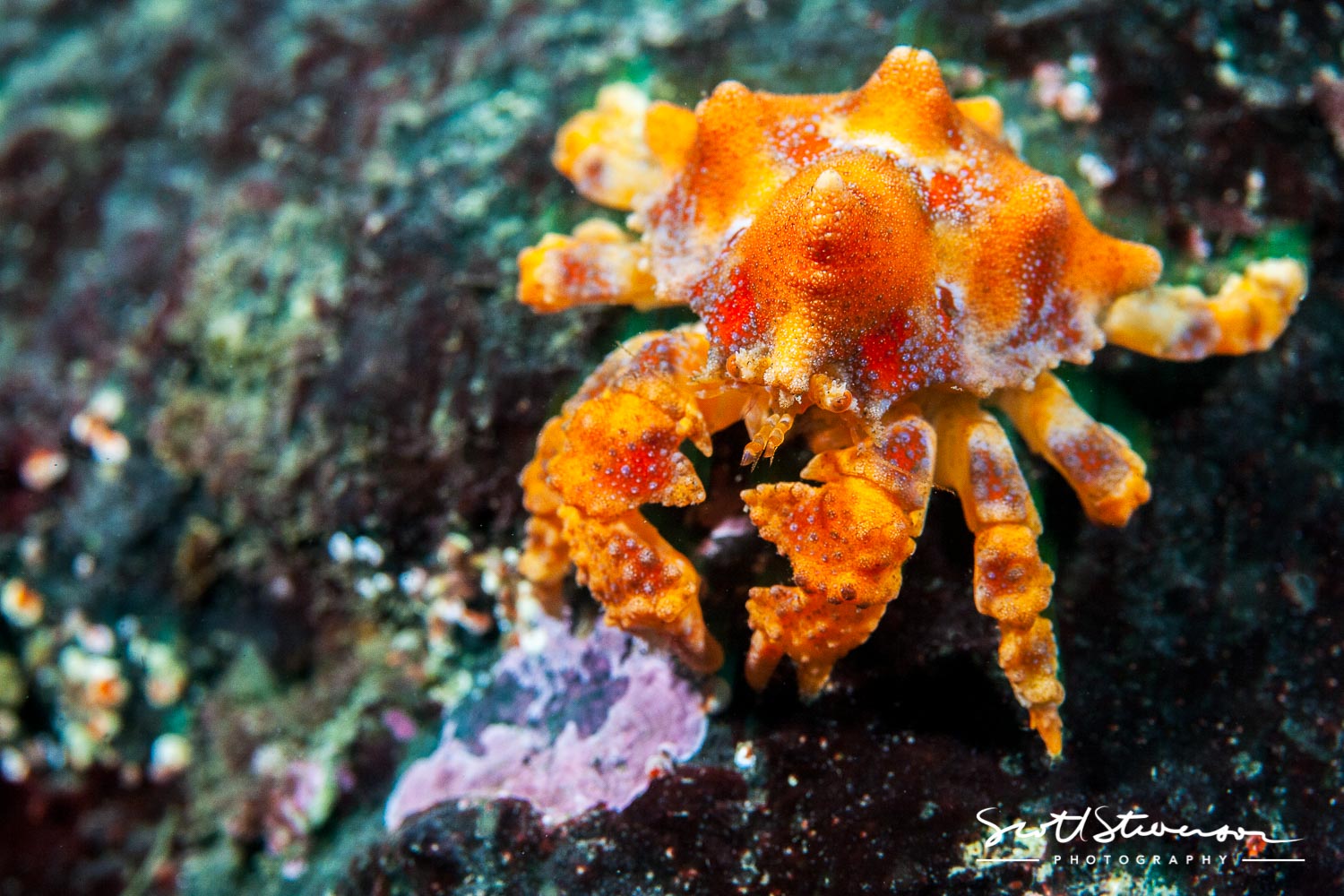
Like hermit crabs, Puget Sound King Crabs are right-handed, the right claw being far larger than the left. Each of their claws are intended for a specific function. The left is used for more finesse tasks, while the right is designed for crushing and grinding. Do yourself a favour and don't get your finger trapped in the right claw of one of these crabs.
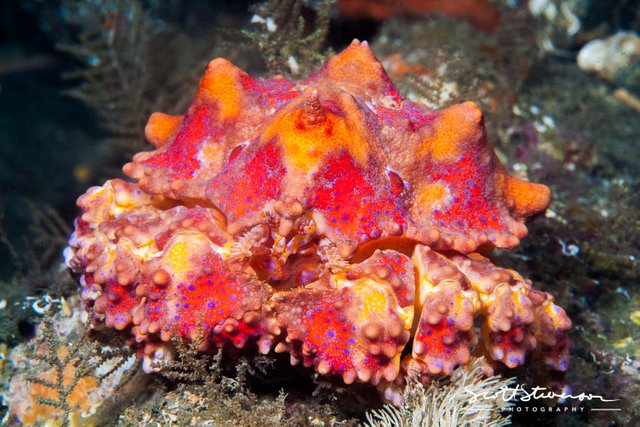
These crabs feed on almost anything, from barnacles to sea urchins, but Sunflower Sea stars are its favourite.
Primarily a deep-water animal, the Puget Sound King Crab prefers to dwell in rocky habitat in areas of strong current. They can often be found clinging to vertical walls or perched on top of small ledges, similar to those ledges favoured by bottom fishes such as Cabezon or Red Irish Lord.
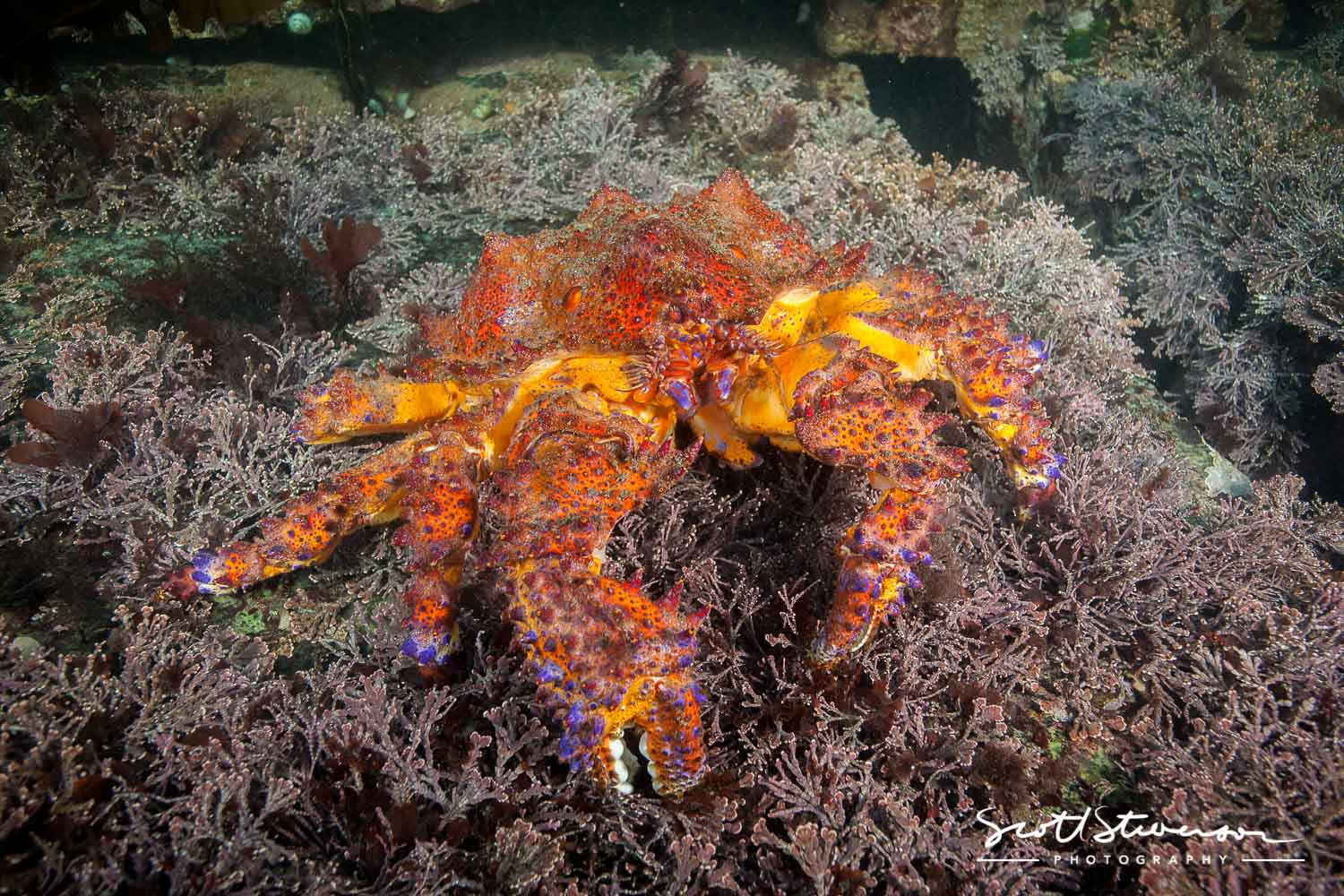
The colours of a Puget Sound King Crab are truly stunning – there’s virtually no other word for it. As juveniles they are monochromatic – a solid bright orange that at first thought would seem to make them easy to spot. However, many invertebrate animals in the Pacific Northwest are the same brilliant orange - sponges, anemones, cup corals, tunicates and gorgonians, to name a few – so being orange is actually a fairly decent means of hiding while being in plain sight! Often a direct beam from a diver’s light is the only means of spotting one of these beautiful creatures.
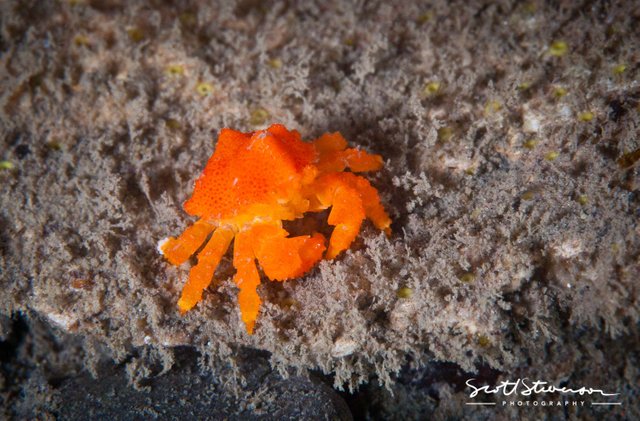
Juveniles also have several “cone-like” peaks on their carapace that appear quite remarkable and significantly fade with the onset of adulthood. Once a juvenile reaches approximately two inches or more across the carapace they will begin to assume the colour scheme of an adult crab – a gorgeous array of yellows, oranges, reds, purples and blues. Fully grown adult Puget Sound King Crabs can reach 30 cm (12 inches) across their carapace.
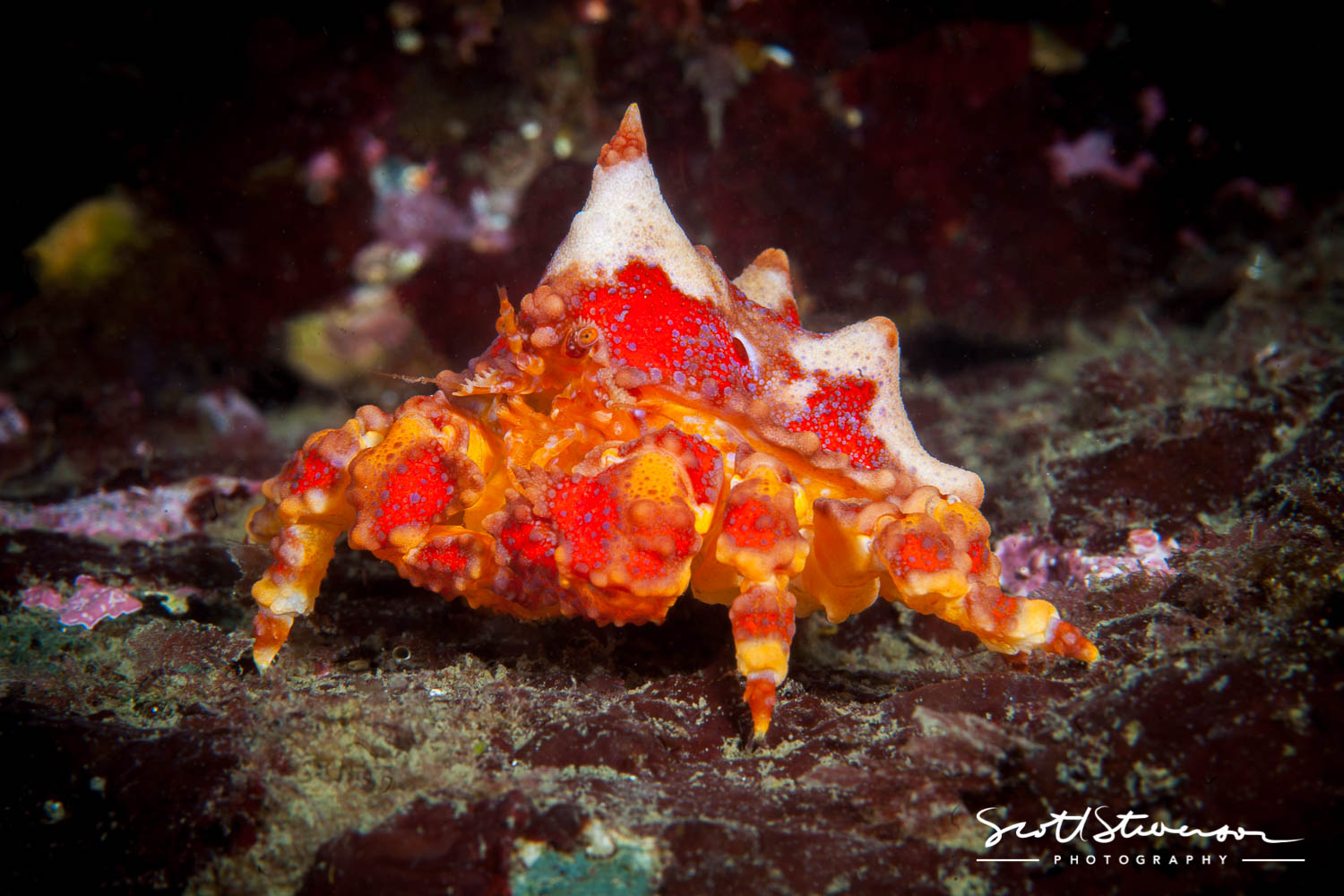
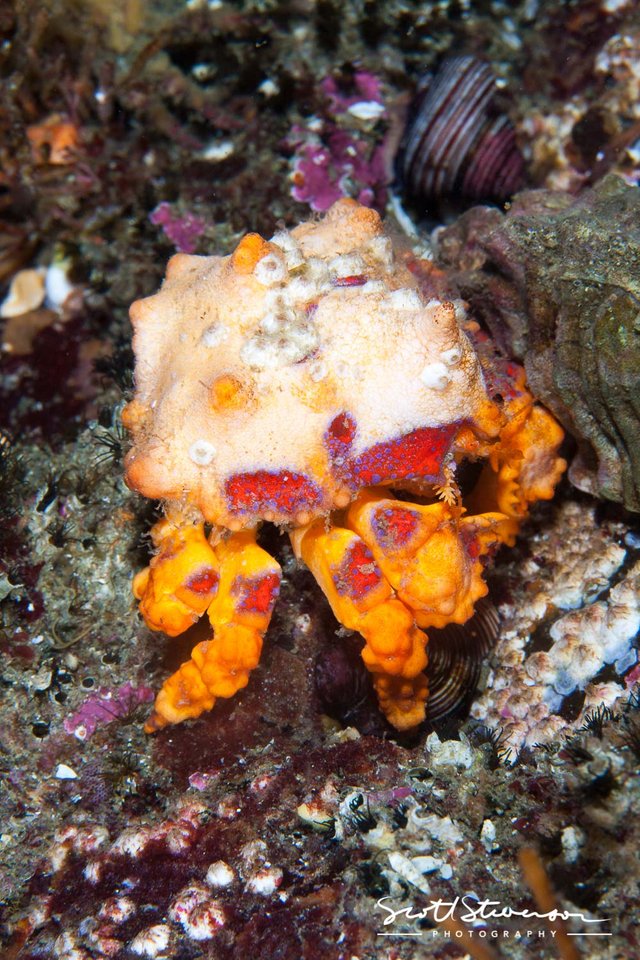
Puget Sound King Crabs are migratory, living most of their lives below recreational diving depths, but in the early winter moving to shallower water as part of their molting and mating cycles. Then returning to deeper water again after they have mated and molting is completed. The exact life span and life cycle of these crabs is unknown due to the difficulty to observe them during most of the year.
Finding one of these incredibly colourful underwater mountains is truly a treat. Their vibrant colours are perfect for snapping some amazing images. These crabs are slow moving and are quite fragile right after they have molted, please be careful when interacting with them.
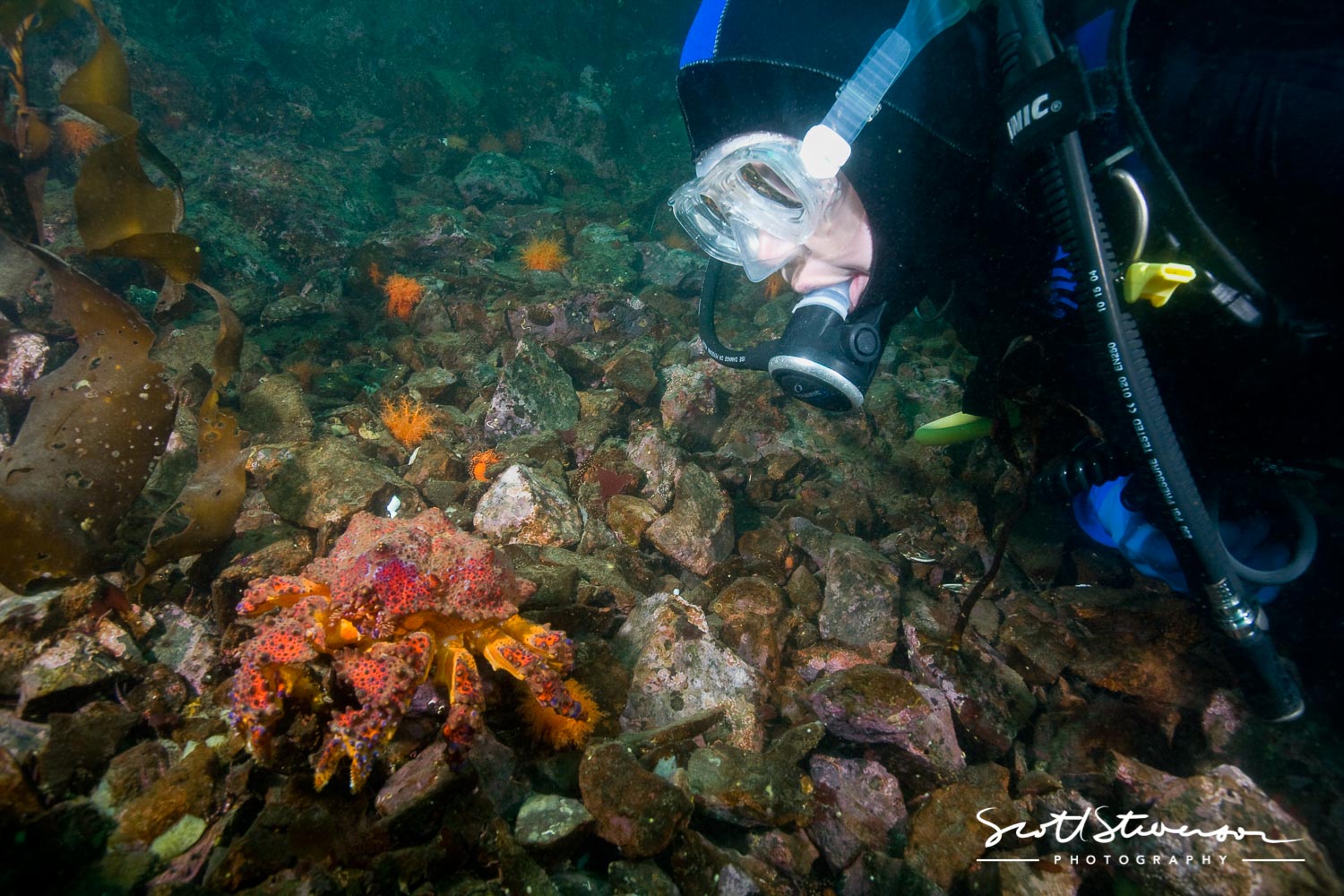
Happy diving and good luck.
Scott.
For more stories and images - http://www.scottstevensonphotography.ca/
Wonderful photo!
beauty
These photos are epic! I always love to see underwater pictures. The colors are awesome and the photos are great.
Nice photos.
My heart is racing, I'm pretty much in love with everything in the Pacific; the coral reefs are overwhelming and the fauna associated with corals is truly amazing.
The brilliant and bright colours protect their bearers from UV radiation and also help them hide in plain sight, this is called crypsis and can be found almost everywhere, from these incredible crabs to some gekkos in Madagascar.
In the Atlantic ocean there's also crypsis but backgrounds are brownish, greenish or other sober colours; therefore, animals and algae are brown, dark green, gray...
I'm really happy you found this spiky friend and could take pictures of it :)
my underwater pictures are always washed out, how do you get the colors to pop?
really very interesting creatures
Fantastic post greetings
Beautiful photo's. Where in the norther pacific did you take these pics?
such a really wonderful thing to discover all the beautifull creations in the deep of the see love the shots
What an amazing post. I love all kinds of marine animals, and would love to explore their world one day. But what I have found more interesting about your post is that the crab is right handed. I once had a tropical take and had vampire crabs, they were amazing in color as they were purple. Thank you for sharing your amazing pictures, a definite upvote and follow as would love to see more.